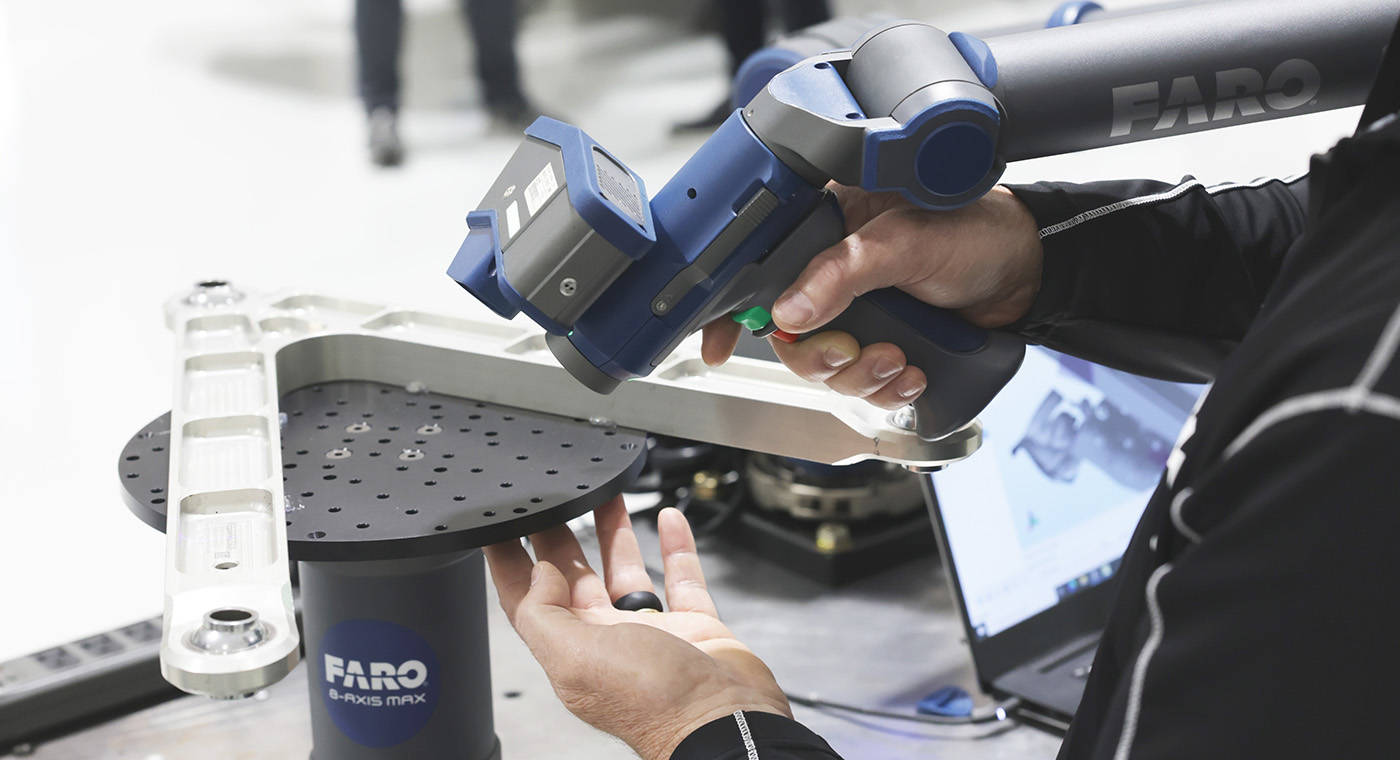The world relies on measurement to operate, and for hundreds of years this has been accomplished by the tools of the time — hand tools such as calipers and micrometers, which provided basic measurements but struggled with more complex dimensions (like an unusual geometry, organic shapes, etc.).
However, as advancements in technology accelerated industrial growth dramatically, companies needed new tools to keep up the pace. It was critical to develop solutions that produced repeatable, accurate results that could align to rigorous global standards of measurement.
Coordinate measuring machines (CMMs) were introduced in the 1960s to capture those complex geometries with a much higher rate of accuracy using a measurement bed, a probe, a computer and software to operate the probe. Measurement was, and continues to be, confined to the range of the probe on the bed, however, and the probe can only move in three axes, limiting its maneuverability.
What is a portable measurement arm, and how does it work?

Portable articulated CMMs, also commonly known as measurement arms, are 3D devices developed in response to the growing need for a solution that provides better portability and flexibility than fixed solutions. Portable measurement arms determine and record the location of a probe in 3D space and report the results through software. The arm calculates the probe's exact position at each point through embedded encoders on each axis (or joint) in the arm. Furthermore, portable arms can be equipped with laser scanning attachments that enable non-contact measurements.
They come available in multiple working volumes, typically from 4 feet to 12 feet (with a radial reach from 2 to 6 feet in any direction). They are also characterized by the number of rotational axes – arms typically come in 6 or 7-Axis configurations, with 6-Axis models used in high accuracy, hard probing applications, and 7-Axis models used when additional articulation is needed for use with laser scanning attachments and specialty probes. FARO® offers an exclusive 8-Axis configuration, the FARO 8-Axis Max (a rotary worktable).
Benefits
- Enjoy the combined benefits of a traditional CMM — reliability, repeatability, and accuracy, with the versatility and portability of hand tools
- Measure full parts quickly and easily, including those with complex geometries
- Measure on-demand, without needing to program a specific routine first
- Operate in a variety of environments, unlike a traditional CMM that requires a temperature-controlled room
- Transport the arm to where the part is made rather than bringing each part to a special room, decreasing inspection bottlenecks and increasing productivity
- Perform a full digital analysis and review the data at any time
- Produce inspection reports to document and share
Taken together, this translates into more time saved: With data capture, analysis, and inspection time all greatly reduced, users can put that time saved into more production, diversifying product lines, streamlining workforce efforts, and more.
A best-in-class portable measurement arm should come in various sizes and configurations to meet diverse needs. Companies producing portable arms should continue to iterate as technology evolves and customers’ needs change.
Quantum X FaroArm® Series
The Quantum X is offered in three different models and a spectrum of system integrations that allow the user to customize it even further for use across a variety of applications:
- Geometric Dimensioning & Tolerance (GD&T): Collect information on parts to compare data to drawings and blueprints
- CAD-based inspection: Measure against CAD model data to gain real-time feedback
- On-machine inspection: Inspect a part before, during, and after its production, on the machine tool producing it
- First article inspection: Review pre-production samples and compare against nominal data
- Alignment: Align tools and fixtures to the correct orientation
- Reverse engineering: Capture and digitize parts and objects to create a CAD model
Quantum X with Laser Line Probes

FARO offers various Laser Line Probes (LLP), which attaches to the 7-Axis FaroArm to become a scanning arm. Attaching the laser line probe directly to the articulated arm allows data to be fully captured without contact with an object. Measurement points are captured by projecting a beam onto the object's surface, and a camera then "looks" at the beam to determine its location. The laser line probe is fully encoded to the arm, allowing uninterrupted data transfer.
And because the laser captures data at a high rate, users can quickly and easily obtain large amounts of point cloud data containing millions of points in a grid.
Non-contact applications include inspecting soft, deformable, or complex shapes, performing cloud-to-CAD comparison, rapid prototyping, reverse engineering, and 3D modeling.
Making the Fixed to Portable Switch
Adopting portable CMMs into a measurement workflow is pivotal in modernizing the inspection process. While the transition involves training and initial investment, the long-term benefits—greater flexibility, faster measurements, and improved efficiency—make it a compelling move for many manufacturers. With the proper planning and implementation, these tools can dramatically enhance your quality control and give your team the agility to meet today’s evolving production demands.
Learn more about the FARO portable CMM offering through the following assets:
- [Watch] Discover the Quantum X FaroArm– Here
- [Article/Brochure] The Next Level of Probing and Scanning Accuracy– Here
- [Infographic] Wondering if an 8-Axis is even applicable to you. Find out – Here
Do you have questions about using portable measurement arms in your work?
